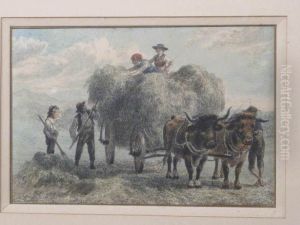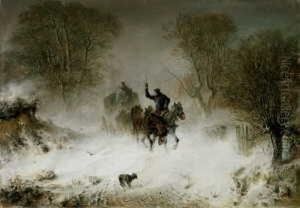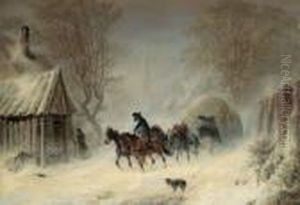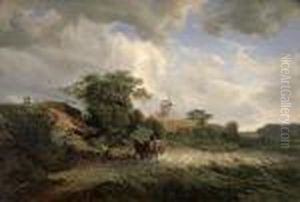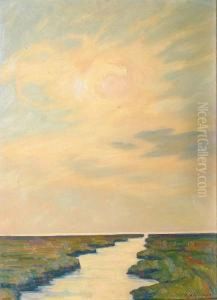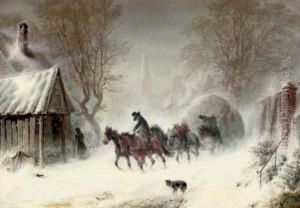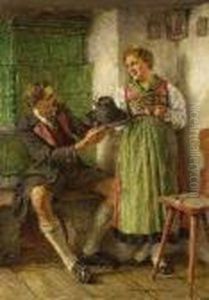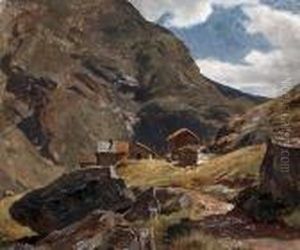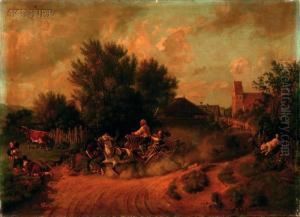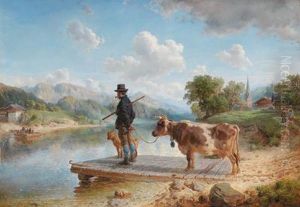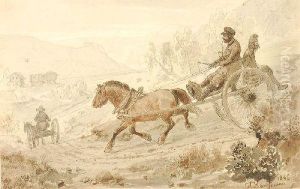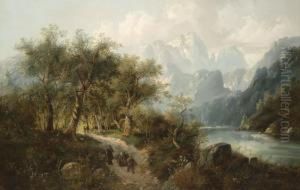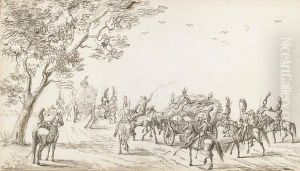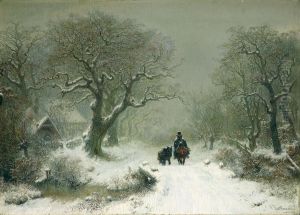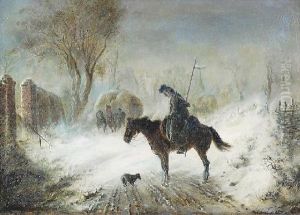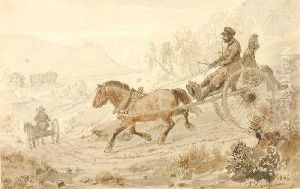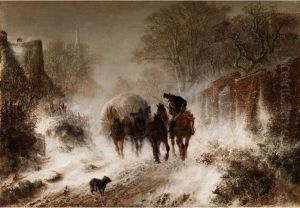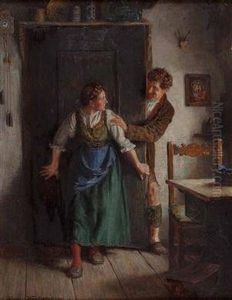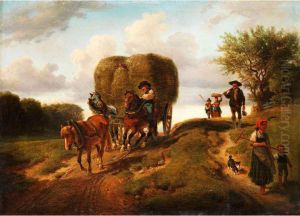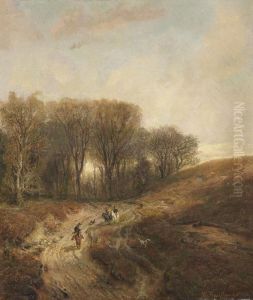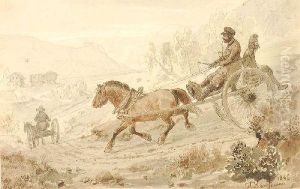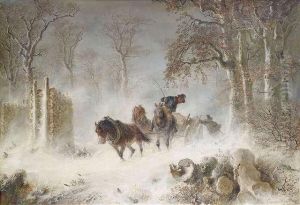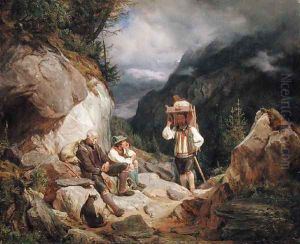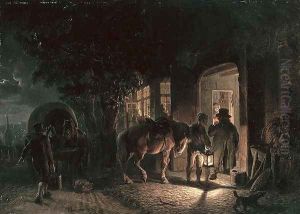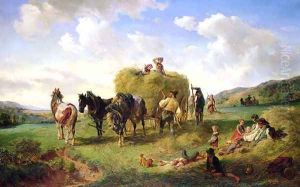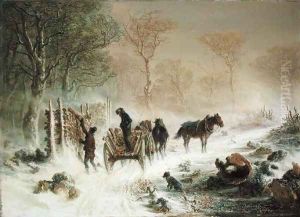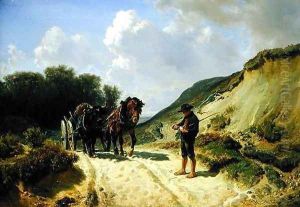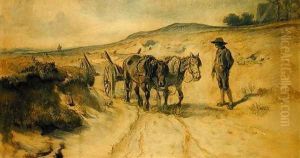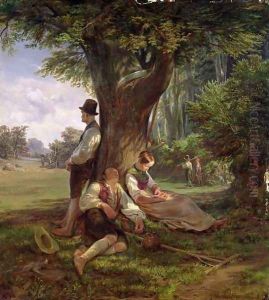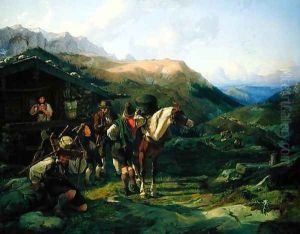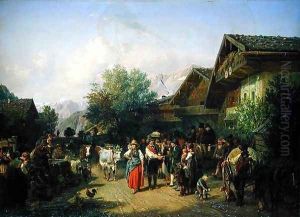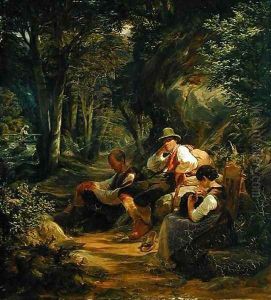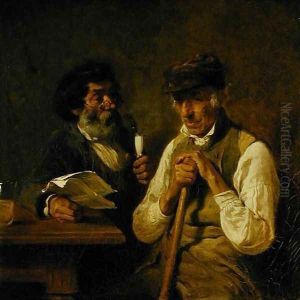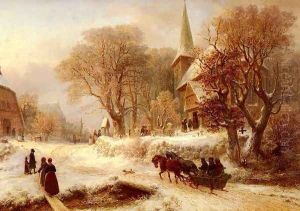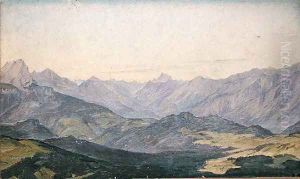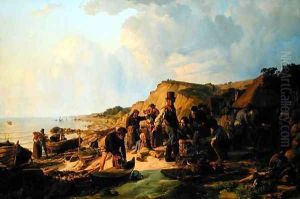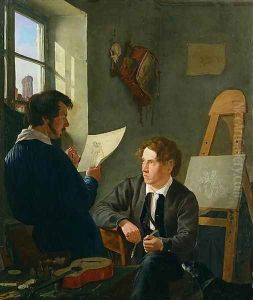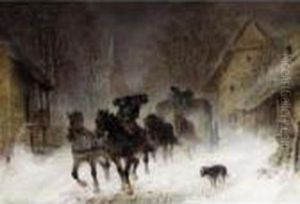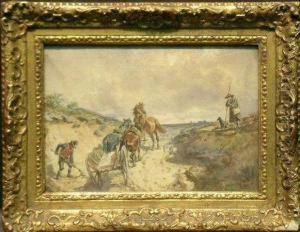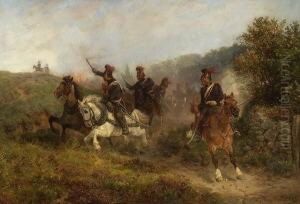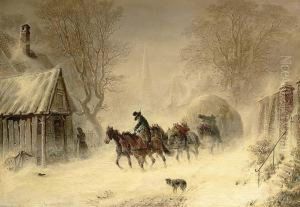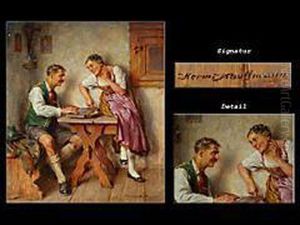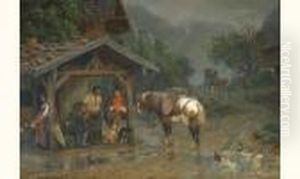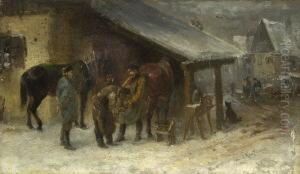Hermann Kauffmann Paintings
Hermann Kauffmann was a German painter known primarily for his works depicting scenes from rural life and landscapes. He was born on October 19, 1808, in Hamburg, Germany, and became one of the prominent representatives of the Hamburg School of painting.
Kauffmann studied at the Academy of Fine Arts in Munich and traveled extensively in Germany, which greatly influenced his artistic style. His early works were marked by a keen observation of nature and rural life, capturing the customs and daily activities of peasants with a realistic approach.
Throughout his career, Hermann Kauffmann remained closely connected to his native city of Hamburg. His paintings often depicted the North German landscape, including the life of the local people, the countryside, and the sea. He was particularly adept at rendering atmospheric effects and the changing moods of nature, which he achieved through meticulous attention to light and color.
Kauffmann's work was well-received during his lifetime, and he became a respected member of the art community in Hamburg. He was not only influential as an artist but also as a teacher, passing on his knowledge and skills to future generations of painters.
During the later part of his career, Kauffmann continued to develop his style, and his paintings became more atmospheric with a stronger sense of mood, reflecting the Romantic spirit that pervaded European art during the mid-19th century. He is remembered as a painter who captured the essence of the German countryside during a time of significant social and industrial change.
Hermann Kauffmann died on June 3, 1889, in Hamburg. His art remains significant in the context of 19th-century German painting, and his works are featured in various art collections and museums in Germany and beyond.
